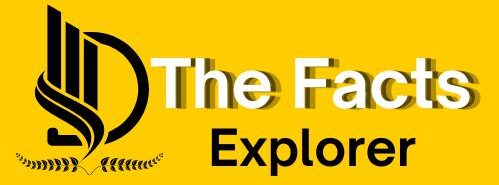Moebius Syndrome: Symptoms, Causes, Impacts, Diagnosis and Treatment
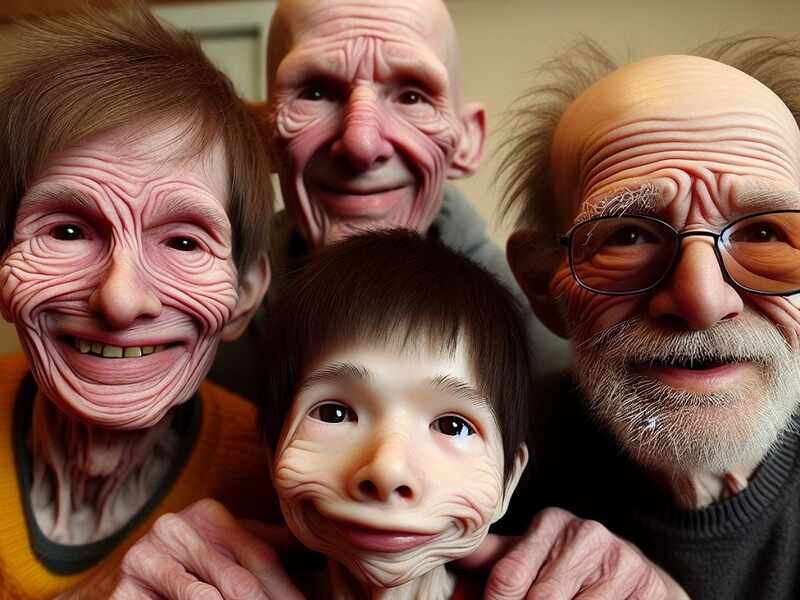
Moebius syndrome, a rare mental disorder, was first identified by Dr. Paul Julius Moebius in the late 19th century. This disorder, characterized by facial paralysis and limited eye movement, falls under congenital cranial dysinnervation disorders. Its rarity is underscored by an estimated incidence of 2 to 20 cases per million births, making it an intriguing subject for medical exploration.
The term “Moebius” has transcended its origin as a mere eponym, becoming synonymous with a complex interplay of genetic factors contributing to the syndrome’s manifestation. This disorder arises from improperly developing cranial nerves, particularly the sixth and seventh pairs, impacting facial expression and ocular functions. Its etiology remains elusive, with some cases linked to genetic mutations while others arise sporadically, defying straightforward categorization.
Discovery of Moebius syndrome has been a gradual process, marked by evolving medical understanding and diagnostic techniques. Early cases were often misdiagnosed due to the syndrome’s varied presentation, encompassing not only facial palsy but also musculoskeletal and neurological anomalies. The advent of advanced imaging technologies and genetic testing has facilitated more accurate identification, shedding light on the intricate web of factors influencing its occurrence.
Despite its infrequency, Moebius syndrome holds significance in the medical landscape, offering researchers a unique window into the complexities of craniofacial development. As diagnostic capabilities improve, a clearer picture emerges, enabling targeted interventions and support for those affected. The rarity of Moebius syndrome underscores the importance of continued research to unravel its mysteries and enhance medical comprehension of congenital disorders.
In conclusion, Moebius syndrome is a testament to the intricate dance of genetics and development within the human body. Its rarity and ongoing advancements in medical science render it a focal point for exploration and understanding. As we unravel the intricacies of this condition, we inch closer to providing comprehensive care and support for those navigating the challenges posed by Moebius syndrome.
Moebius Syndrome Symptoms
Moebius syndrome, a rare neurological disorder, manifests through a distinctive set of symptoms that collectively shape the clinical profile of affected individuals. Understanding these symptoms is crucial for early diagnosis and tailored intervention. Here, we delve into the intricate tapestry of ten key manifestations of Moebius syndrome.
Facial Paralysis and Expression Limitations:
Moebius syndrome is perhaps most recognized by its hallmark symptom – facial paralysis. Individuals with this condition experience limited or absent facial expressions due to the underdevelopment of facial nerves. A defining feature is the inability to smile, frown, or convey emotions through facial gestures.
Impaired Eye Movement:
Another characteristic symptom involves restricted eye movements. Affected individuals may encounter challenges in moving their eyes laterally, horizontally, or vertically. This limitation in ocular mobility is often bilateral and contributes to the unique facial features associated with Moebius syndrome.
Feeding and Swallowing Difficulties
Moebius syndrome can impact the coordination of facial muscles, leading to difficulties in feeding and swallowing. Infants with the syndrome may exhibit challenges in sucking and swallowing, necessitating specialized care and feeding techniques.
Speech Articulation Challenges
The absence of facial muscle control extends to the articulation of speech sounds. Individuals with Moebius syndrome may encounter speech difficulties, affecting pronunciation and clarity. Speech therapy is commonly employed to address and mitigate these challenges.
Orthopedic Anomalies
Musculoskeletal abnormalities are prevalent in Moebius syndrome, ranging from limb deformities to joint contractures. These orthopedic manifestations contribute to the diverse clinical spectrum of the disorder, emphasizing the need for comprehensive medical assessment.
Strabismus and Vision Issues
Strabismus, a misalignment of the eyes, frequently occurs in Moebius syndrome. This can lead to double vision and visual impairments. Regular ophthalmic evaluations are crucial to manage and address potential vision-related complications.
Hearing Impairments
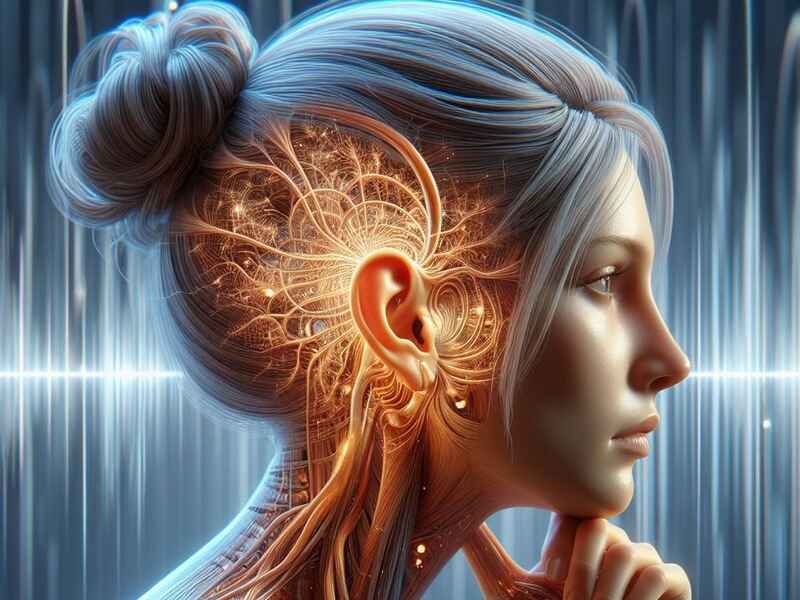
While not universal, hearing impairments may be associated with Moebius syndrome. The connection between facial nerve abnormalities and auditory function underscores the complex nature of this condition, necessitating multidisciplinary care.
Dental and Craniofacial Abnormalities
Moebius syndrome often presents with dental and craniofacial irregularities, such as cleft or high-arched palate. These structural differences contribute to the unique facial features observed in individuals with the syndrome.
Social and Emotional Impacts
Beyond the physical symptoms, Moebius syndrome can exert social and emotional challenges. Facial immobility may influence interpersonal interactions, potentially impacting self-esteem and social integration. Psychosocial support is instrumental in addressing these aspects of the condition.
Neurodevelopmental Variations
Moebius syndrome has been associated with neurodevelopmental variations, including intellectual disabilities in some cases. The impact on cognitive function varies, emphasizing the need for individualized assessments and tailored interventions to support optimal development.
In conclusion, Moebius syndrome unfolds as a complex tapestry of symptoms, each contributing to the unique clinical presentation of affected individuals. As awareness grows and medical understanding advances, early identification, and multidisciplinary care become pivotal in enhancing the quality of life for those navigating the challenges posed by this rare neurological condition.
Moebius Syndrome Causes
Moebius syndrome, a rare neurological condition, perplexes both medical professionals and affected individuals due to its enigmatic origins. Unraveling the intricate web of causes underlying this disorder requires a nuanced exploration of genetic and environmental factors. Here, we delve into ten potential contributors to the onset of Moebius syndrome.
Genetic Mutations
Genetic anomalies stand as a primary cause of Moebius syndrome. Mutations affecting specific genes involved in cranial nerve development, such as the MBS1 and MBS2 genes, have been identified in some cases. These mutations disrupt the average growth of facial and ocular nerves, giving rise to the characteristic symptoms of the syndrome.
Chromosomal Aberrations
Although this link is not universal, Moebius syndrome has been associated with chromosomal abnormalities. Specific chromosomal rearrangements or deletions may disrupt the delicate orchestration of genes involved in facial nerve development, contributing to the manifestation of the syndrome.
Vascular Insults During Pregnancy
In some instances, disturbances in blood flow to the developing fetus during pregnancy have been implicated in the genesis of Moebius syndrome. Reduced blood supply to critical areas of the developing brain may disrupt the normal formation of cranial nerves, leading to the characteristic features of the disorder.
Environmental Factors
While most Moebius cases have a genetic basis, environmental factors may contribute. Exposure to specific teratogenic agents or toxins during pregnancy has been explored as a potential trigger for the syndrome. However, the particular agents and their interactions with genetic predispositions remain areas of ongoing research.
Maternal Illnesses and Infections
Maternal illnesses and infections during pregnancy have been suggested as potential risk factors for Moebius syndrome. Certain viral infections and autoimmune conditions may influence the intrauterine environment, impacting the developing nervous system and contributing to the occurrence of the disorder.
Multifactorial Inheritance Patterns
Moebius syndrome often exhibits a complex inheritance pattern involving genetic and environmental factors. The interplay of these multifactorial influences contributes to the variability in the severity and presentation of the syndrome among affected individuals.
Unknown Genetic Variants

In a subset of Moebius cases, the precise genetic cause remains elusive. Undiscovered genetic variants or mutations, possibly in genes yet to be identified, may account for these instances. Advances in genetic research continue to shed light on previously unknown contributors to the syndrome.
Intrauterine Trauma
Traumatic events during fetal development, such as intrauterine injuries or compression of the developing head, have been proposed as potential triggers for Moebius syndrome. These events may disrupt the delicate processes of cranial nerve formation, leading to characteristic facial and ocular symptoms.
Hereditary Factors
Moebius syndrome occasionally exhibits familial clustering, suggesting a hereditary component. While specific genetic markers have been identified in some domestic cases, the inheritance pattern can vary. Genetic counseling plays a crucial role in understanding and navigating the hereditary aspects of the syndrome.
Idiopathic Cases
The etiology remains unknown in a subset of Moebius syndrome cases, and the condition is classified as idiopathic. These instances underscore the complexity of the disorder and the need for ongoing research to uncover additional factors contributing to its development.
In conclusion, Moebius syndrome is a multifaceted condition influenced by genetic, environmental, and developmental factors. The journey to unravel its causes is ongoing, with each discovery bringing us closer to a comprehensive understanding of this rare neurological phenomenon.
Moebius Syndrome Impacts
With its distinctive constellation of symptoms, Moebius syndrome leaves an indelible impact on individuals affected by this rare neurological condition. From physical challenges to psychosocial implications, the repercussions of Moebius syndrome extend across various facets of life. Here, we explore ten significant impacts that shape the experiences of those living with this unique disorder.
Facial Communication Limitations
The hallmark facial paralysis associated with Moebius syndrome profoundly influences communication. Facial expressions are a fundamental aspect of human interaction, and the inability to convey emotions through these non-verbal cues can create challenges in expressing oneself and understanding the feelings of others.
Social and Interpersonal Dynamics

The visual cues provided by facial expressions are integral to social dynamics. Individuals with Moebius syndrome may encounter difficulties navigating social situations where facial expressions are crucial. This can impact relationships, friendships, and overall social integration.
Educational Challenges
Moebius syndrome’s impact extends to the educational realm, particularly speech and language development. Articulation difficulties may affect communication in academic settings, necessitating specialized support and accommodations to ensure optimal learning experiences.
Psychological Well-being
The visible differences associated with Moebius syndrome can influence self-esteem and body image. Individuals may grapple with societal perceptions of beauty and normalcy, potentially leading to psychological challenges. Cultivating a positive self-image becomes crucial in navigating the psychosocial aspects of the condition.
Speech and Communication Hurdles
Beyond facial expressions, Moebius syndrome affects speech and vocalization. Articulatory challenges stemming from facial muscle immobility may lead to difficulties in pronunciation and clarity. Speech therapy becomes an integral component of managing and mitigating these communication hurdles.
Functional Limitations in Daily Activities
Moebius syndrome’s impact extends to the performance of daily activities that involve facial and oral motor skills. Tasks such as eating, drinking, and personal care may present challenges, requiring adaptive strategies and support to enhance independence.
Orthopedic and Motor Complications
Musculoskeletal abnormalities associated with Moebius syndrome can result in orthopedic challenges. Limb deformities and joint contractures may affect mobility and fine motor skills, influencing an individual’s ability to engage in various physical activities.
Medical Interventions and Surgical Considerations
Depending on the severity of symptoms, individuals with Moebius syndrome may undergo medical interventions or surgeries to address specific aspects of the condition, such as corrective surgeries for limb abnormalities or facial reanimation procedures. These interventions can impact the overall health journey of individuals with the syndrome.
Educational and Professional Stigma
Despite advancements in societal awareness, individuals with Moebius syndrome may encounter stigma in educational and professional settings. Misconceptions about their abilities and potential discrimination may pose additional challenges, underscoring the importance of advocacy and awareness initiatives.
Supportive Networks and Coping Mechanisms
The presence of supportive networks and coping mechanisms mitigate the impact of Moebius syndrome. Supporting families, friends, and communities is vital in helping individuals navigate the challenges of the condition. Developing effective coping strategies is essential for fostering resilience and adapting to the unique aspects of living with Moebius syndrome.
In conclusion, Moebius syndrome leaves an intricate imprint on various aspects of an individual’s life, from communication hurdles to psychosocial dynamics. Recognizing and addressing these impacts requires a holistic approach encompassing medical, psychological, and societal dimensions, fostering an environment of understanding, acceptance, and support for those affected by this rare neurological condition.
Moebius Syndrome Diagnosis
Diagnosing Moebius syndrome, a rare and complex neurological disorder, is a nuanced process that involves a combination of clinical evaluations, specialized testing, and multidisciplinary assessments. Here, we delve into the intricacies of diagnosing Moebius syndrome, shedding light on the key elements that guide healthcare professionals in identifying and understanding this unique condition.
Clinical Evaluation and Medical History
The diagnostic journey often begins with a thorough clinical evaluation and a detailed medical history. Healthcare professionals, including neurologists and geneticists, carefully examine the patient’s facial features, motor functions, and developmental milestones. A comprehensive medical history review may reveal familial patterns or potential risk factors associated with Moebius syndrome.
Facial Nerve Function Assessment
A critical aspect of Moebius syndrome diagnosis involves assessing the functionality of the facial nerves. This examination includes observing voluntary and involuntary facial movements, evaluating the ability to close the eyes tightly, and considering the coordination of facial muscles during expressions. The absence or limitation of facial mobility is a crucial indicator prompting further investigation.
Ocular and Musculoskeletal Examinations
Given the multifaceted nature of Moebius syndrome, ocular and musculoskeletal examinations play pivotal roles in the diagnostic process. Ophthalmologists assess eye movements, looking for signs of strabismus (misalignment of the eyes) and other visual abnormalities. Additionally, musculoskeletal evaluations aim to identify limb abnormalities or joint contractures commonly associated with the syndrome.
Genetic Testing and Molecular Analysis
Advancements in genetic testing have significantly enhanced the diagnostic precision for Moebius syndrome. Molecular analysis, including genetic sequencing, helps identify specific genetic mutations associated with the disorder. Mutations in genes such as MBS1 and MBS2 have been implicated in some cases, providing valuable insights into the underlying genetic mechanisms.
Imaging Studies
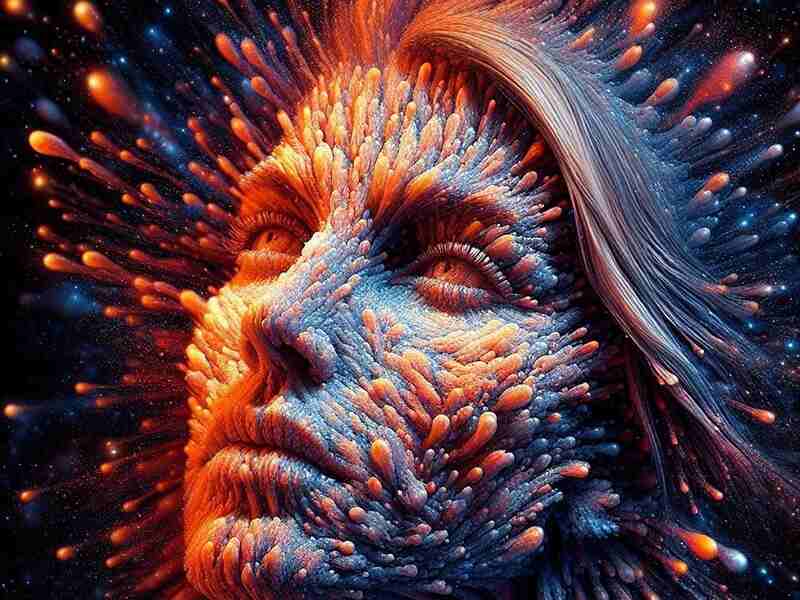
Radiological imaging studies, such as magnetic resonance imaging (MRI) and computed tomography (CT) scans, may be employed to visualize the brain structures and cranial nerves. These studies contribute to a comprehensive understanding of the neurological aspects of Moebius syndrome, assisting in ruling out other potential causes of facial paralysis.
Differential Diagnosis Considerations
Given the rarity of Moebius syndrome and the overlap of symptoms with other conditions, healthcare professionals must engage in a meticulous differential diagnosis process. Distinguishing Moebius syndrome from conditions like congenital facial palsy or other congenital cranial dysinnervation disorders requires expertise and a holistic approach.
Collaborative and Multidisciplinary Approach
Diagnosing Moebius syndrome benefits from a collaborative and multidisciplinary approach. A team of specialists, including neurologists, geneticists, ophthalmologists, speech therapists, and orthopedic experts, collaborates to gather diverse insights into the clinical presentation and impact on various facets of an individual’s health.
Early Intervention and Developmental Monitoring
Timely diagnosis of Moebius syndrome is instrumental in initiating early interventions and support. Early intervention services, including speech, occupational, and physical therapy, address developmental challenges and enhance overall quality of life. Regular developmental monitoring ensures tailored interventions evolve with the individual’s changing needs.
Genetic Counseling
Genetic counseling plays a crucial role in the diagnostic process, especially in cases where genetic mutations are identified. Genetic counselors provide comprehensive information about the genetic basis of Moebius syndrome, its inheritance patterns, and potential implications for family members. This empowers individuals and families to make informed decisions about family planning and genetic testing.
Psychosocial Assessment and Support
Diagnosing Moebius syndrome extends beyond the physical aspects, encompassing psychosocial dimensions. A comprehensive assessment considers the emotional and social well-being of individuals and families. Psychosocial support services help navigate the unique challenges associated with living with Moebius syndrome, fostering resilience and adaptive coping strategies.
In conclusion, diagnosing Moebius syndrome is a multifaceted process combining clinical expertise, genetic analysis, and collaborative efforts across various medical disciplines. Advances in medical technology and a growing understanding of the genetic underpinnings continue to refine the diagnostic approach, facilitating early interventions and comprehensive support for individuals affected by this rare neurological condition.
Life Expectancy with Moebius Syndrome
Life expectancy with Moebius syndrome, a rare neurological condition characterized by facial and ocular paralysis, is a topic that intertwines medical complexities, individual variations, and evolving research insights. Understanding the factors that influence life expectancy for individuals with Moebius syndrome involves a nuanced exploration of the condition’s medical implications, associated health considerations, and the impact of supportive care.
Medical Considerations
The medical landscape surrounding Moebius syndrome does not inherently diminish life expectancy. Unlike certain life-limiting conditions, Moebius syndrome primarily affects facial and ocular functions without directly compromising vital organs or physiological systems. However, the impact on an individual’s health can vary widely based on the symptoms’ severity and associated features, such as musculoskeletal abnormalities.
Associated Health Challenges
While Moebius syndrome may not directly threaten life expectancy, individuals with the condition may encounter associated health challenges. Respiratory issues can be a concern, particularly in cases where facial muscle weakness affects breathing patterns. Additionally, feeding difficulties in infancy may necessitate careful monitoring and intervention to ensure proper nutrition and growth.
Multidisciplinary Care
The availability of multidisciplinary care significantly influences the longevity and quality of life for individuals with Moebius syndrome. Collaborative efforts among neurologists, ophthalmologists, speech therapists, orthopedic specialists, and other healthcare professionals contribute to a comprehensive approach to addressing the diverse challenges associated with the syndrome.
Impact of Associated Conditions
In some instances, Moebius syndrome may co-occur with other medical conditions or syndromes, potentially influencing life expectancy. For example, suppose an individual with Moebius syndrome has additional health complexities, such as cardiac anomalies or respiratory issues. In that case, these factors may contribute to a more nuanced health prognosis.
Advancements in Medical Understanding
As research on Moebius syndrome progresses, a deeper understanding of the condition’s medical implications emerges. Advances in genetic research, diagnostic techniques, and therapeutic interventions contribute to a more nuanced perspective on the long-term health outcomes for individuals with Moebius syndrome.
Individual Variability
One of the striking aspects of Moebius syndrome is the considerable variability in its presentation and impact on individuals. The spectrum of severity ranges from mild cases with minimal functional limitations to more complex expressions involving multiple systems. This individual variability extends to the overall health trajectory and life expectancy.
Quality of Life Considerations
Life expectancy discussions should not solely revolve around numerical predictions but also encompass the quality of life. Individuals with Moebius syndrome can lead fulfilling and meaningful lives with appropriate support and interventions. Quality of life considerations extend beyond medical parameters to encompass psychosocial well-being, independence, and community integration.
Early Interventions and Support
Timely interventions and supportive care are pivotal in enhancing the life experience for individuals with Moebius syndrome. Early initiation of speech therapy, physical therapy, and other supportive services can mitigate developmental challenges, fostering optimal physical and cognitive development.
Family and Community Support
The impact of Moebius syndrome on life expectancy is intertwined with the strength of familial and community support. A supportive environment that fosters inclusion, understanding, and access to necessary resources contributes significantly to an individual’s overall well-being and life satisfaction.
Educational and Vocational Opportunities
Life expectancy discussions also extend to considerations of education and vocational opportunities. Individuals with Moebius syndrome can pursue education, employment, and social activities with appropriate accommodations and support, contributing to a sense of purpose and fulfillment.
In conclusion, life expectancy with Moebius syndrome is a multifaceted and individualized aspect influenced by various factors, including associated health considerations, supportive care, and the evolving landscape of medical knowledge. While the condition may not inherently impact life expectancy, a comprehensive and collaborative approach to healthcare and a supportive social environment is crucial in enhancing the overall well-being and longevity of individuals living with Moebius syndrome.
Moebius Syndrome Treatment
Moebius syndrome, characterized by facial and ocular paralysis, presents a complex challenge for medical professionals seeking effective treatment strategies. Although there is currently no cure for this rare neurological condition, a multifaceted approach aims to manage symptoms, enhance functional abilities, and improve overall quality of life. In this exploration of Moebius syndrome treatment, we delve into various therapeutic modalities, supportive interventions, and emerging avenues of research.
Multidisciplinary Therapies
Central to Moebius syndrome treatment is a multidisciplinary approach involving a team of healthcare professionals. Speech therapy addresses speech and communication challenges associated with facial muscle immobility. Occupational therapy enhances daily living skills, including feeding, grooming, and fine motor activities. Physical therapy may be employed to address musculoskeletal abnormalities and optimize biological function.
Early Intervention for Developmental Milestones
Early intervention is paramount in addressing developmental challenges associated with Moebius syndrome. Initiating therapeutic interventions during infancy and childhood can significantly impact the trajectory of motor and cognitive development. Addressing feeding difficulties, speech delays, and motor skill challenges early on improves outcomes and enhances quality of life.
Surgical Interventions
In some cases, surgical interventions may address specific aspects of Moebius syndrome. Facial reanimation surgery aims to restore facial movement by transferring muscles or utilizing nerve grafts. While these procedures can improve facial symmetry and expression, they require careful consideration of individual needs and potential risks.
Orthopedic Management
Individuals with Moebius syndrome often experience musculoskeletal abnormalities, such as limb deformities or joint contractures. Orthopedic management, including bracing and physical therapy, focuses on optimizing mobility and addressing functional limitations associated with these skeletal variations.
Vision and Ocular Care
Ophthalmic care is integral in managing visual challenges associated with Moebius syndrome. Strabismus (misalignment of the eyes) and other ocular abnormalities may require interventions such as corrective lenses, prisms, or, in some cases, surgical procedures to enhance visual function and comfort.
Assistive Technologies and Adaptive Aids
Advancements in assistive technologies provide valuable tools for individuals with Moebius syndrome. Augmentative and alternative communication (AAC) devices assist those with speech challenges, allowing them to express themselves more effectively. Adaptive aids for daily living, such as modified utensils or braces, contribute to increased independence.
Psychosocial Support and Counseling
Psychosocial well-being is a vital aspect of Moebius syndrome treatment. Coping with the visible differences associated with the condition, navigating social interactions, and addressing potential emotional challenges require comprehensive psychosocial support. Counseling services and support groups are crucial in fostering resilience and addressing the emotional aspects of living with Moebius syndrome.
Genetic Counseling and Family Support
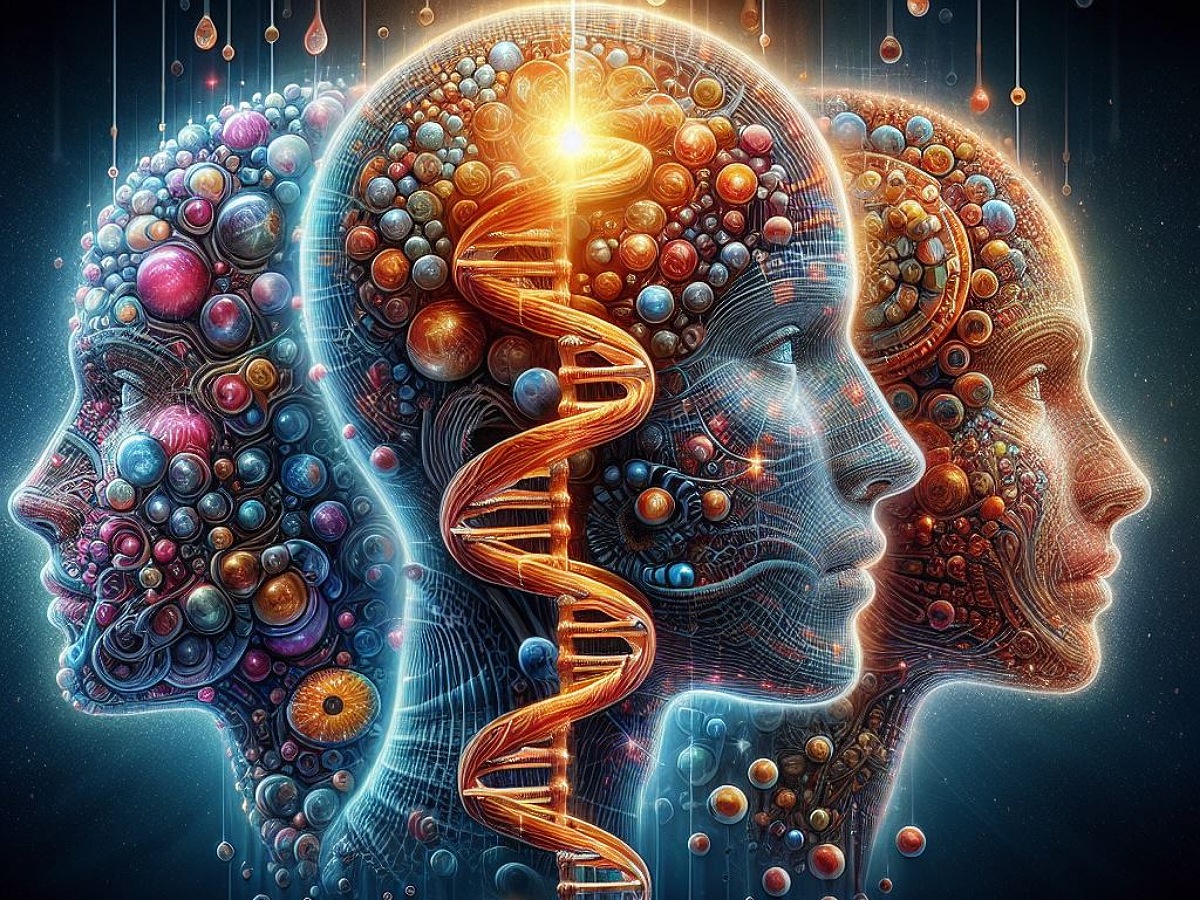
Genetic counseling is essential to Moebius syndrome management, especially when genetic mutations are identified. Information about the genetic basis, inheritance patterns, and potential implications for family members empowers individuals and families to make informed decisions. Family support is pivotal in creating a nurturing environment that facilitates the well-being of those affected by Moebius syndrome.
Educational Accommodations
Educational interventions are vital in facilitating optimal learning experiences for individuals with Moebius syndrome. Collaborating with educators to implement appropriate accommodations, such as modified teaching methods or assistive technology in the classroom, ensures that individuals can reach their educational potential.
Emerging Therapeutic Approaches
Research into Moebius syndrome treatment is ongoing, with emerging therapeutic approaches offering hope for the future. Experimental treatments, including regenerative medicine and gene therapy, aim to address the underlying genetic factors contributing to the condition. While these approaches are in the early stages of investigation, they hold promise for more targeted and transformative interventions.
In conclusion, Moebius syndrome treatment encompasses a comprehensive and individualized approach that addresses the diverse challenges associated with the condition. From early intervention strategies to surgical procedures and emerging therapeutic avenues, the goal is to enhance functional abilities, improve quality of life, and empower individuals with Moebius syndrome to lead fulfilling and meaningful lives. Ongoing research and advancements in medical science continue to shape the landscape of treatment possibilities for this rare neurological condition.
Famous People with Moebius Syndrome
Moebius syndrome, a rare neurological condition, has affected individuals from various walks of life, including some well-known figures who have faced and overcome its challenges. Exploring 20 famous people with Moebius syndrome, we delve into their stories, achievements, and the resilience that defines their journeys.
1. Mat Fraser
Renowned British actor and performer Mat Fraser has embraced his unique facial features associated with Moebius syndrome. Known for his roles in “American Horror Story” and “His Dark Materials,” Fraser advocates for inclusivity and challenges societal perceptions of beauty.
2. Rhiannon Giles
Rhiannon Giles, an accomplished writer and advocate, shares her experiences living with Moebius syndrome through her blog and articles. Her writings explore themes of identity, acceptance, and the broader societal impact of facial differences.
3. Megan Bomgaars
Megan Bomgaars gained national attention through the reality series “Born This Way.” An advocate for individuals with intellectual and developmental disabilities, Megan, who has Moebius syndrome, strives to break down barriers and promote inclusivity.
4. Michael Connolly
Michael Connolly, a talented artist with Moebius syndrome, has used his unique perspective to create compelling artworks that reflect his experiences. His creations challenge preconceived notions and contribute to the growing dialogue around facial differences.
5. Renata Vieira
Renata Vieira, a Brazilian psychologist, author, and speaker, has become influential in the Moebius syndrome community. Her advocacy work emphasizes the importance of empowerment, self-acceptance, and overcoming societal stigmas.
6. Vicki Pitman
Vicki Pitman, a passionate advocate for Moebius syndrome awareness, shares her journey through public speaking engagements and social media. She fosters understanding and breaks down stereotypes by actively engaging with the Moebius community.
7. Troye Evers
Troye Evers, an author and motivational speaker, shared his experiences growing up with Moebius syndrome in his memoir “My Life Without a Mask.” His story reflects the resilience and determination of individuals facing unique challenges.
8. Emily Prior
A talented photographer, Emily Prior, has used her art to challenge societal norms and perceptions of beauty. Through her captivating images, she highlights the diverse beauty found in individuals with Moebius syndrome and encourages acceptance.
9. Chelsea Werner
Chelsea Werner, an accomplished gymnast, defied expectations and became a Special Olympics champion. Diagnosed with Moebius syndrome, she inspires aspiring athletes, showcasing the power of determination and perseverance.
10. Máté Gulyás
Máté Gulyás, a Hungarian advocate for disability rights, has been vocal about his experiences with Moebius syndrome. Through interviews and public appearances, he raises awareness about the challenges faced by individuals with facial differences.
11. Anton Heunis
South African jewelry designer Anton Heunis has gained international acclaim for his unique and artistic creations. Diagnosed with Moebius syndrome, he has overcome challenges and channeled his creativity into a successful career in the fashion industry.
12. Giorgia Benusiglio
Giorgia Benusiglio, an Italian actress, has embraced her unique facial features associated with Moebius syndrome. Her presence in the entertainment industry contributes to a more inclusive representation of diverse faces on screen.
13. Joe Stramondo
Philosopher and bioethicist Joe Stramondo actively engages in advocacy work related to disability rights. Born with Moebius syndrome, he contributes to academic discussions on disability studies, challenging societal perceptions and promoting inclusivity.
14. Gaurav Dubey
Gaurav Dubey, an Indian motivational speaker and disability rights activist, advocates for inclusivity and challenges stereotypes associated with facial differences. His efforts contribute to changing societal perceptions and fostering acceptance.
15. Laura Dorwart
In her writings, Laura Dorwart, a writer and editor, shared her experiences living with Moebius syndrome. She sheds light on the emotional and societal aspects of navigating life with a facial difference through personal essays and articles.
16. Owen Pickard
A talented artist and illustrator, Owen Pickard uses his creative expression to challenge societal norms. His artworks capture the essence of living with Moebius syndrome, fostering dialogue and understanding within the broader community.
17. Shannon Rupp
Journalist and writer Shannon Rupp, who has this syndrome, has contributed thought-provoking pieces on disability rights and social justice. Through her work, she addresses systemic issues and advocates for a more inclusive and accessible world.
18. Olivia Francis
Olivia Francis, an Australian advocate for Moebius syndrome awareness, shares her journey through social media platforms. Her efforts contribute to building a supportive community, fostering connections, and challenging societal norms.
19. Duncan Smith
Duncan Smith, a Canadian filmmaker, has used his platform to share stories that amplify the voices of individuals with facial differences, including Moebius syndrome. His work contributes to a more inclusive representation in the media.
20. Francesco Clark
Francesco Clark, the founder of Clark’s Botanicals, is an entrepreneur and advocate who has overcome challenges associated with this syndrome. His success in the skincare industry and dedication to promoting diversity challenge conventional beauty standards.
In conclusion, these 20 individuals with Moebius syndrome have significantly contributed to various fields, breaking down barriers, challenging societal norms, and advocating for inclusivity. Their stories are powerful reminders of resilience, determination, and the diversity that enriches our collective human experience.
